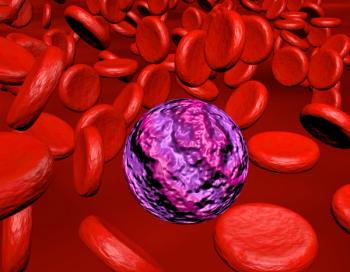
Continuous OS Improvement Observed After Auto-HCT in Relapsing and Non-Relapsing MCL at Subsequent Timepoints
Continued overall survival improvement has been observed at landmark time points in patients with mantle cell lymphoma following treatment with autologous hemopoietic stem cell transplant.
Findings published in the British Journal of Haematology Indicated that patients with relapsing and non-relapsing mantle cell lymphoma had improved adjusted overall survival (OS) at 5 years after each major timepoint; however, outcomes for those who experienced early relapse remained poor.
Eighteen months appeared to be the optimal cut off for defining early vs late relapse, according to investigators. In particular, relapse at 6 months (HR, 7.68; 95% CI,4.06-14.54; P <.0001), 12 months (HR, 6.68; 95% CI, 3.85-11.59; P <.0001), and 18 months (HR, 5.81; 95% CI, 3.63-9.30; P <.0001) were associated with the highest risk of death. Notably, investigators reported that the risk of death for patients with MCL who relapsed decreased with later landmark timepoints and was worse for those who relapsed 48 months after treatment with auto-HCT.
The 5-year adjusted overall survival (OS) was found to improve for both relapsing and non-relapsing patients at every landmark timepoint. A total of 9.3% of patients had relapsed before the 18-month landmark. Relapse at the 6-month, 12-month, and 18-month timepoints appeared to be associated with a median post-relapsed OS of 9 months, 24 months, and 34 months, respectively, investigators reported. However, those who relapsed following the 18-month timepoint had a median post-relapsed OS that ranged from 44 to 67 months.
“While these data evaluate the impact of relapse in patients following auto-HCT, there are limitations inherent to a retrospective analysis including potential centre-specific practice patterns and patient selection bias. Furthermore, biologic risk factors such as the MCL International Prognostic Index (MIPI) score, Ki-67% index, and the presence of TP53 alterations were not compiled during the study period and consequently limit our ability to assess their specific effects on outcomes,” the investigators wrote.
The retrospective analysis including individuals who were 18 years or older and had been diagnosed with MCL. Patients were also required to have gone through 2 prior lines of rituximab (Rituxan)–based induction therapy followed with auto-HCT within 12 months of diagnosis. Patients were required to have received a diagnosis from January 2000 to December 2018 in the United States.
Primary outcomes for the study included OS and post-relapse OS.
A total of 461 patients were included in the analysis. Patients within this group had a median age of 60 years (range, 29-78) and over half (57%) had a Karnofsky performance status of 90 or higher. Moreover, the majority of patients (83%) had stage III/IV disease at the time of diagnosis and 76% had extra-nodal involvement. The most common conditioning regimen was a combination of carmustine, etoposide, cytarabine, and melphalan (58%). Additionally, 23% of patients were treated with maintenance rituximab.
After a median follow up of 67 months (range, 3-208) following treatment with auto-HCT, investigators reported a 5-year progression-free survival (PFS) rate of 45.8% (95% CI, 40.7%-50.9%) as well as a 5-year OS rate of 69.6% (95% CI, 64.8%-74.2%). Advanced age, defined as 60 years of age or older, was associated with poor OS at all landmark timepoints, although the impact appeared to vary with time (HR, 1.55; 95% CI, 1.08-2.24; P = .02). Relapse at any timepoint after treatment with auto-HCT had an association with inferior OS. However, the impact appeared to vary by time (P = .006) and was most notable at earlier landmark timepoints.
Additional findings from the trial indicated that when dichotomizing by age, the 5-year OS rate was 75.2% (95% CI, 68.6%-81.2%) for those who were younger than 60 years of age and 64.3% (95% CI, 57.4%-71.0%) for those who were 60 years or older. Over half of all patients (52%) died due to relapse or progressive disease. Notably, findings from a subgroup analysis indicated that maintenance rituximab after auto-HCT was not significantly associated with survival (P = .53).
Reference
Riedell PA, Hamadani M, Ahn KW, et al. Effect of time to relapse on overall survival in patients with mantle cell lymphoma following autologous haematopoietic cell transplantation. Br J Haematol. Published September 28, 2021. doi:10.1111/bjh.17865
Newsletter
Stay up to date on recent advances in the multidisciplinary approach to cancer.


















































































